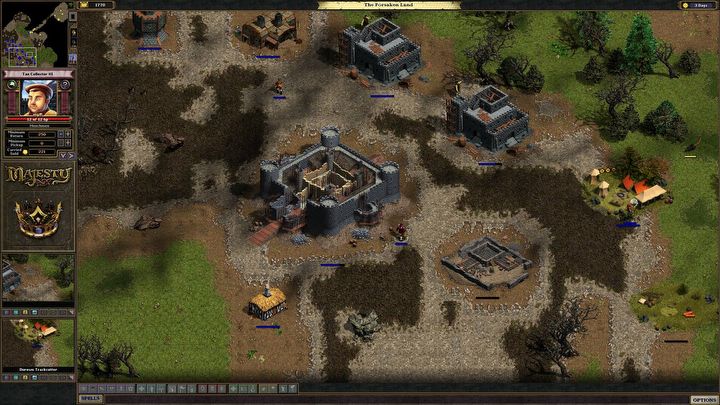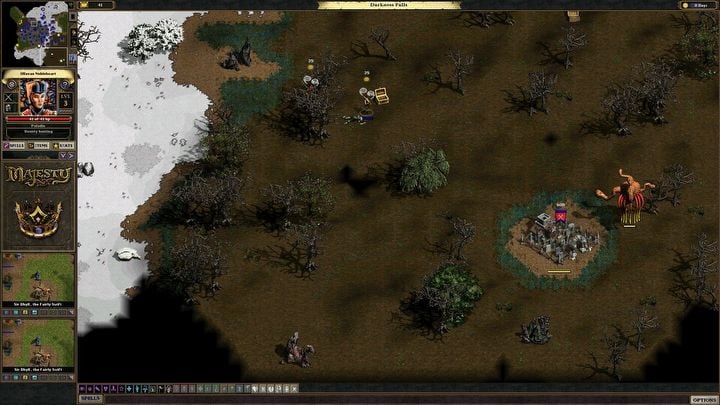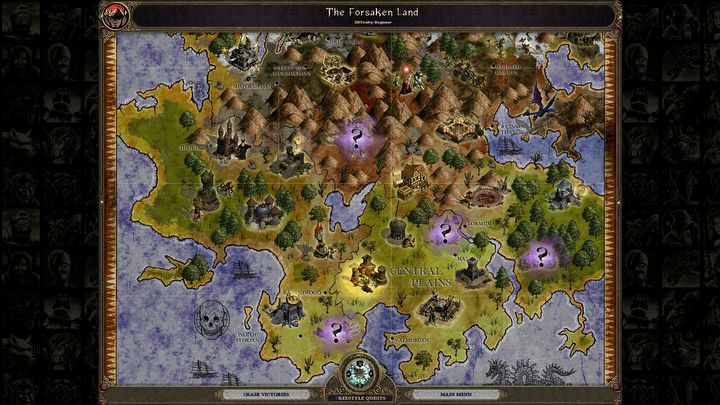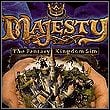Majesty: The Fantasy Kingdom Sim is the game of my childhood. It's unique RTS of a different kind
Majesty: The Fantasy Kingdom Sim makes me happy even after 20 years - and can still be challenging. Unfortunately, this original RTS hasn't found imitators.
3

Every one of us probably feels attached to that one game we got to know a long time ago, back when we were kids. For me, Majesty: The Fantasy Kingdom Sim evokes such sentiment. Roughly 20 years back, as I was stepping into the realm of video games, my brother and I discovered an old CD that was our uncle's. And since there was a dragon on its cover, we immediately decided to borrow it and give it a try.
Majesty was one of the first titles that interested me. Of course, around the same time, I got to know other games, such as Chicken Shoot, Duck Hunt, Batman: The Video Game from 1989, and the ever-living Super Mario Bros. As you can probably guess, I had a NES back then and I had a great time with it. However, when I was about to play the Fantasy Kingdom Sim, I tossed the "duck gun" somewhere in the corner to build the perfect castle, occasionally harassed only by Ratmen and Url Shekk.
RTS, but not quite
Before I start to describe what captivated me about this game for hours, it's fitting to write a few sentences about what it is. Majesty was released in 2000 by Cyberlore Studios. In the game, we play the role of the ruler of the land of Ardania. The game in question is a real-time strategy (RTS), but of a somewhat different type, as we have almost no control over our units.
Every adventure begins more or less the same way: on the map of Ardania, we choose one of the 19 scenarios. Next, we have a short introduction read by the narrator. While playing Majesty (and given my very young age) I didn't always understand the game's assumptions. I only knew that I needed to build different types of buildings and recruit a wide array of the most stereotypical fantasy heroes imaginable: knights, paladins, mages, elves, gnomes, barbarians, sun god worshippers... In total, we had around 30 buildings and several hero classes available to us.
I'm melting!
One of the basic scenarios available in Majesty, The Forsaken Land, taught me the basic principles of the game. There was nothing complicated about them; we simply had to take care of the treasury and level up our heroes. To do this, it was necessary to construct the appropriate buildings and recruit "units." Imagine we commissioned the building of a warrior guild; once it was ready, we recruited brave warriors - but we couldn't simply click on them, direct them to a specific location, and instruct them to slay a menacing minotaur or explore part of the map.
For this purpose, the game provided us with two types of flag-orders. One of them was used for uncovering the map, while the other encouraged the elimination of specific targets. So we set up a flag in the place that interested us, chose the amount of the reward, and waited for some daredevil to dare to reach for it. It was crucial not to make the reward too attractive, because if it was too enticing, all our heroes, regardless of their level, would rush to claim it, and many of them ended up dying ("I'm melting!"). On the other hand, if the reward was too low, no one even wanted to leave the house.
Everything came down to providing our heroes with the appropriate conditions for leveling up and thus ensuring a steady flow of gold to the royal treasury. The key to this were buildings such as the market, the blacksmith, or the inn. My main focus has always been to construct a market and commission research there, providing my subjects with access to a healing potion or a teleportation amulet. When a given character went to buy some potion, he usually left the gold earned from killing monsters at the market.
After some time, it was visited by the royal tax collector, who collected gold and took it to the castle. Since the collector was incredibly slow (or perhaps it was due to his purple frock coat; it's hard to tell), there were always monsters lurking on the city's outskirts, waiting for him. I tried to counteract this by setting up more guard posts, although the cost of their construction was growing exponentially - of course, this applied to all the buildings.
These damn demons
The difficulty level of the aforementioned task didn't pose a huge problem for me. On the other hand, on the Advanced and Expert difficulty levels, I cut my teeth. Maybe that's why I have a knack for difficult games - who knows? Majesty really knew how to give a hard time when it came to the level of challenge. At the lowest difficulty level, the slow building of the economy and leveling up of heroes almost happened by itself. However, choosing scenarios from the northern areas of Ardania was already driving me crazy.
When I was 7 years old, the task A Deal with a Demon, which had the goal of acquiring a hundred thousand gold in 40 days, was absolutely too hard for me. Only years later, when I better understood the rules of the game, was I able to complete this quest. Even returning to Majesty today, to refresh the game mechanics for the purpose of writing this text, I needed a few attempts for some scenarios.
Of course, you can also try out specific strategies - for instance, by constructing a guild of warriors and a temple of Dauros, we could hire paladins, who were always my favorite. At the appropriate levels, they were absolutely invincible and ready to take on a quest even for the worst monsters lurking in the depths of Ardania. Their presence often made it possible for me to complete a given scenario - of course, as long as I could play that way because sometimes objectives required playing in a specific way.
Majesty 2
In 2009, the sequel to Majesty, simply titled Majesty 2, was released, which was developed by the Russian company Ino-Co. This installment offered several changes, which I didn't particularly like. Let's take for example the three-dimensional graphics, which have aged terribly. Majesty 2 also offered less scenarios, only sixteen. The new, quite strange design of the heroes, in my opinion, took away their spirit of adventure seekers, which we knew from the first installment. I know that Majesty 2 has its fans, but for me, it's not a game that you come back to after years.
KROLM MAKES ME STRONGER!
I've heard that when the game was released in 2000, its graphics weren't spectacular. A few years later, when I played it for the first time, I didn't pay much attention to the graphics - although now I see that it has aged poorly. The character and building models look quite weak (although they have a certain charm—it might just be my nostalgia, though). Luckily, the Majesty Gold HD Edition from 2012 comes to the rescue, slightly updating the original game with improved resolution, two new scenarios, and an official DLC, The Northern Expansion.
Atmospheric music is one of the elements of Majesty that will forever remain in my memory. The game has its flaws, such as being repetitive, but the soundtrack is truly well-composed music. In the Fantasy Kingdom Sim, we could also hear the voices of individual heroes. Surely everyone who had a chance to try this game remembers the barbarians' cry (Krolm makes me stronger!), which echoed when we used the special action available in the Krolm temple.
How to play Majesty: The Fantasy Kingdom Sim today?
At present, in stores such as Steam or GOG, the only available purchase is the Gold HD edition of the original Majesty, as detailed above. On Valve's platform, you can purchase it for $9.99, while on GOG, you will pay slightly less, $9.09.
Majesty: The Fantasy Kingdom Sim is a game that is really close to my heart. Whenever I'm looking for a game that will definitely improve my mood, I choose Majesty. I bet many players have similar sentiments for other games from their childhood. Well, maybe someone even shares my opinion about Majesty?
3

Author: Maciej Bogusz
Graduate of English Philology at the University of the National Education Commission. His master's thesis concerned the analysis of the Polish localization of The Last of Us. Associated with Gamepressure.com since 2023. He started his journey with video games on the NES, and eventually moved to the Sony camp. A fan of RPGs, strategies, soulslikes, and other demanding games, as well as titles offering engaging stories. He believes that The Witcher 3: Wild Hunt is the best game in the world. Loves historical books (analyzing the course of battles is his bread and butter) as well as animated movies and series.
Latest News
- End of remote work and 60 hours a week. Demo of Naughty Dog's new game was born amid a crunch atmosphere
- She's the new Lara Croft, but she still lives in fear. Trauma after Perfect Dark changed the actress' approach to the industry
- „A lot has become lost in translation.” Swen Vincke suggests that the scandal surrounding Divinity is a big misunderstanding
- Stuck in development limbo for years, ARK 2 is now planned for 2028
- Few people know about it, but it's an RPG mixing Dark Souls and NieR that has received excellent reviews on Steam, and its first DLC will be released soon





